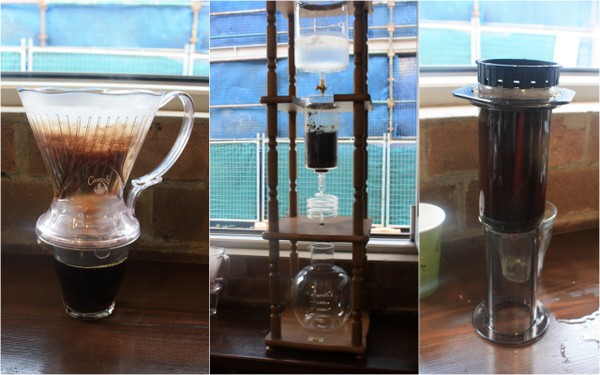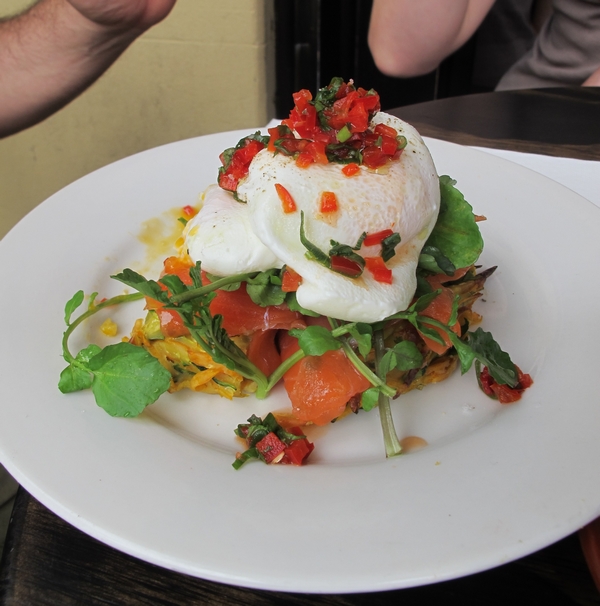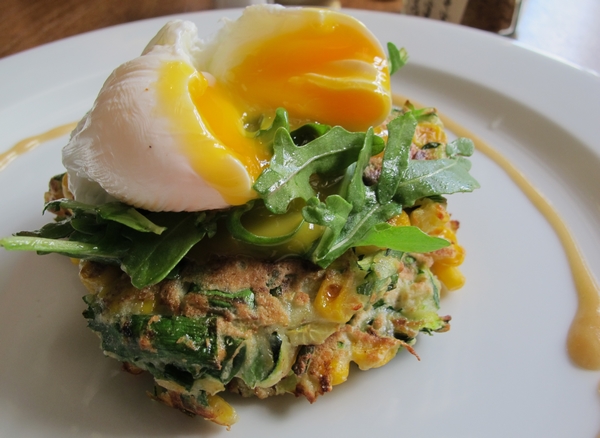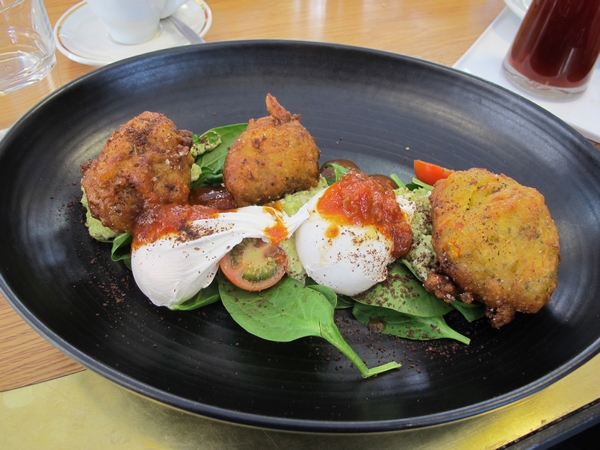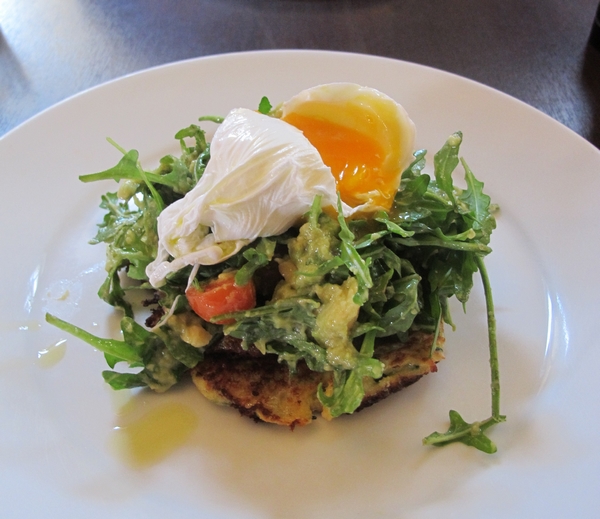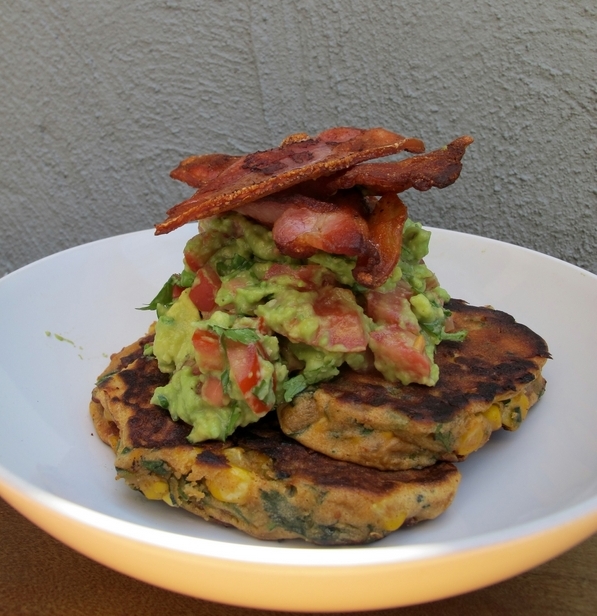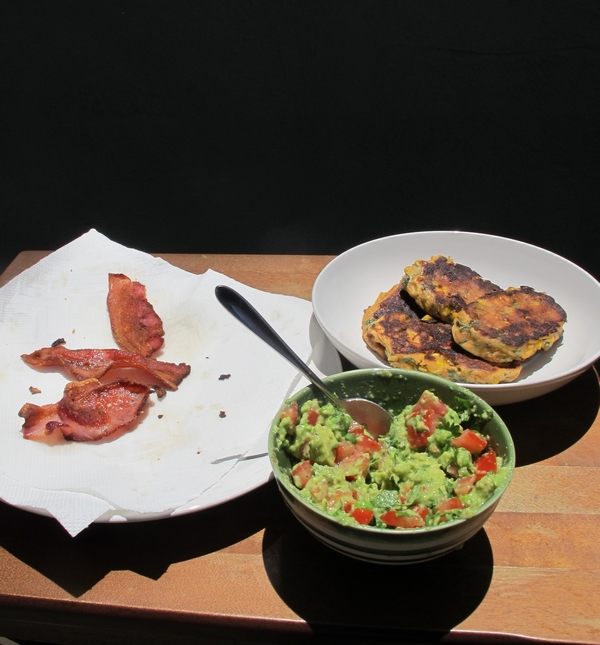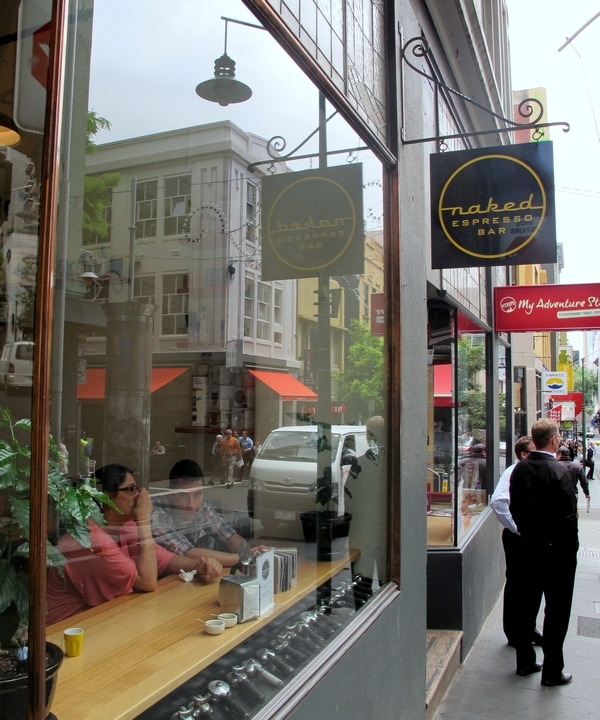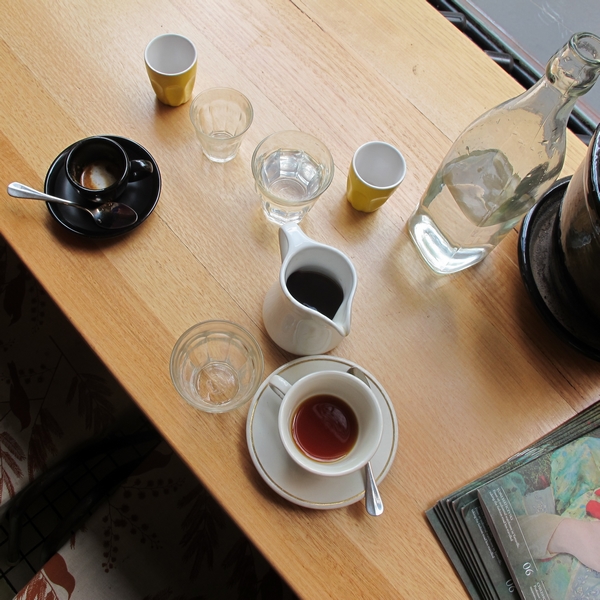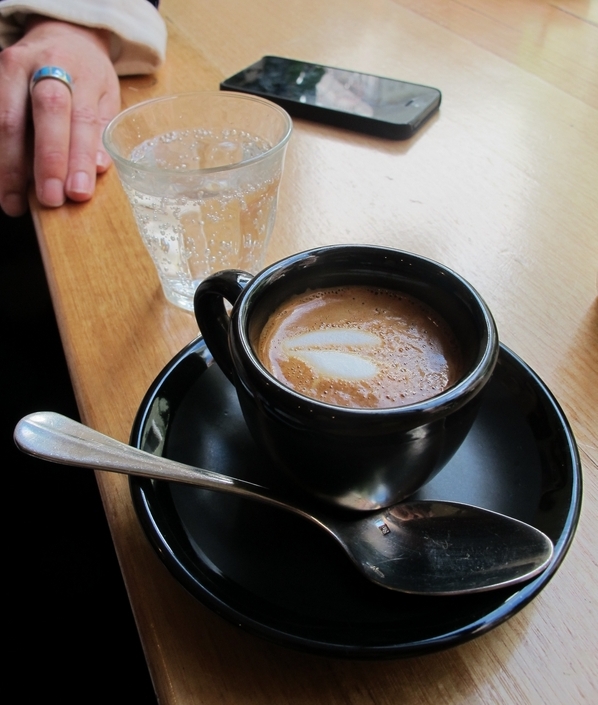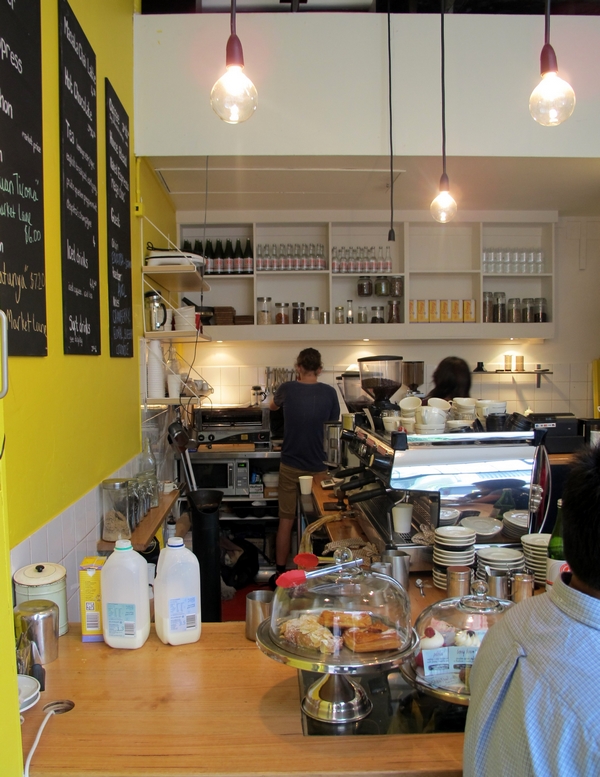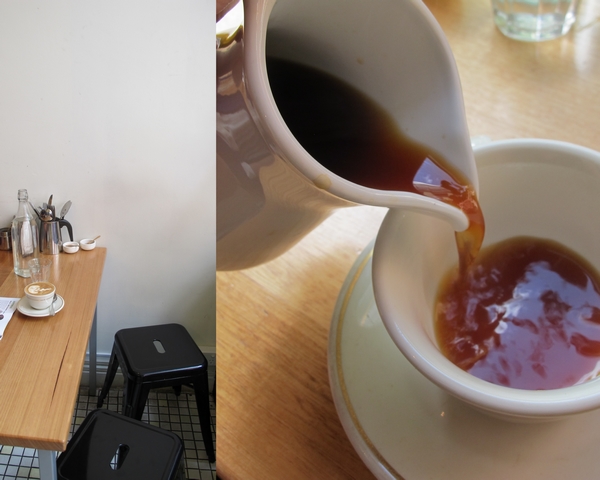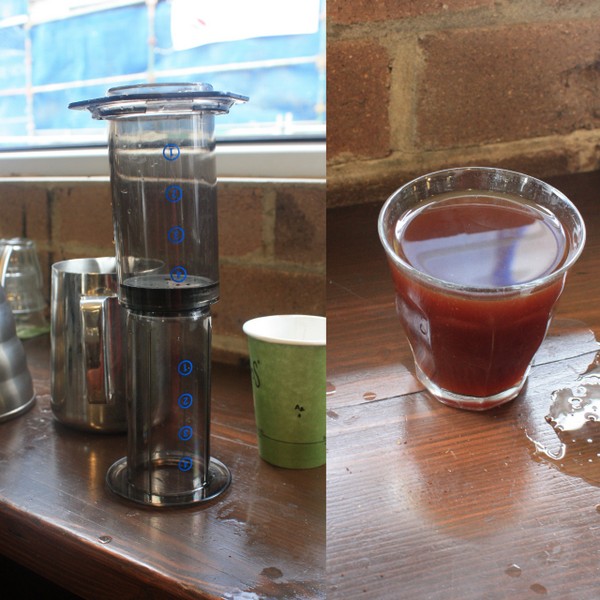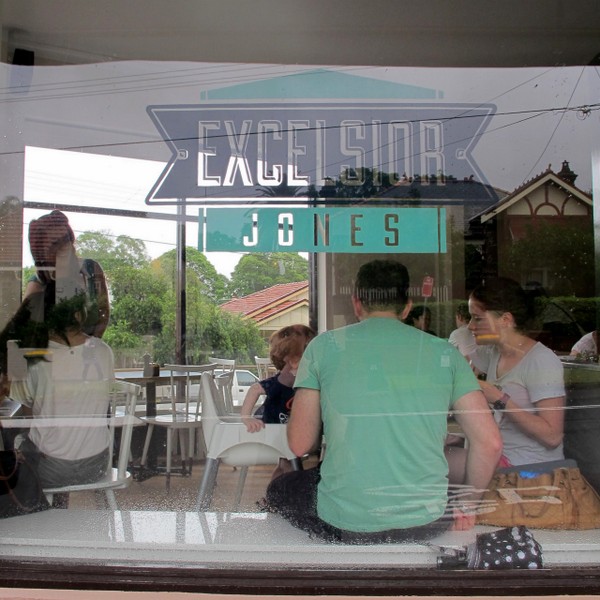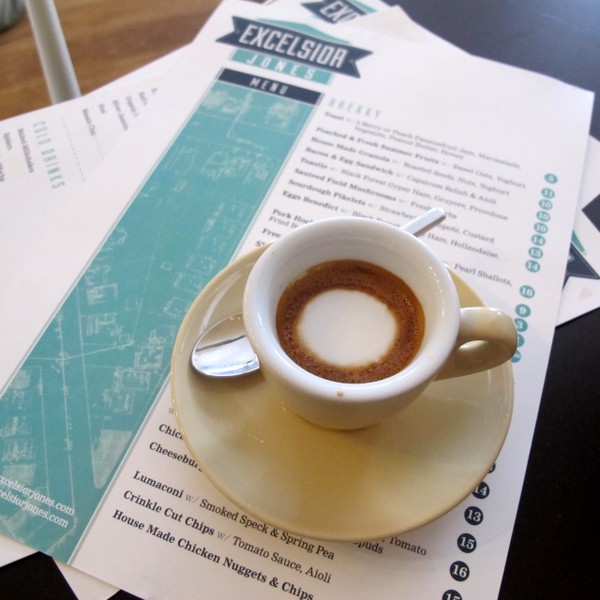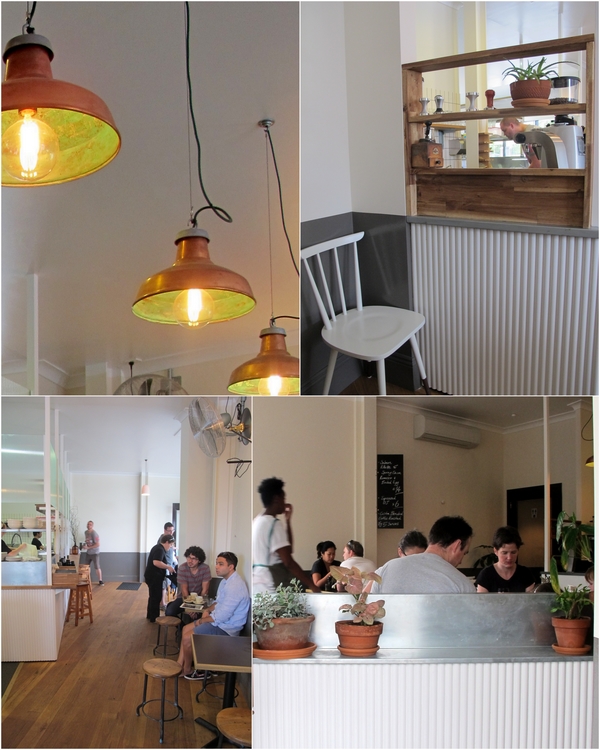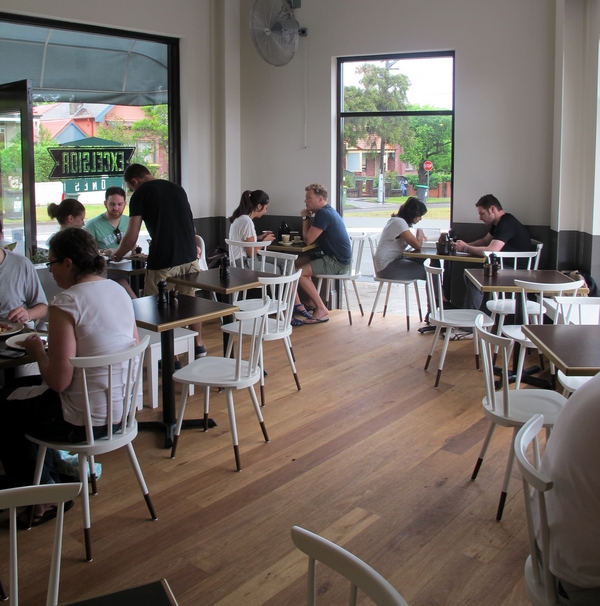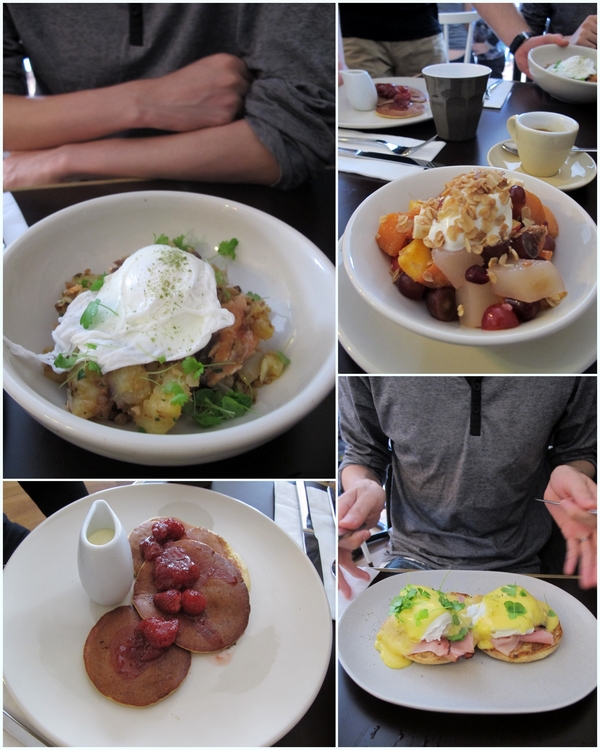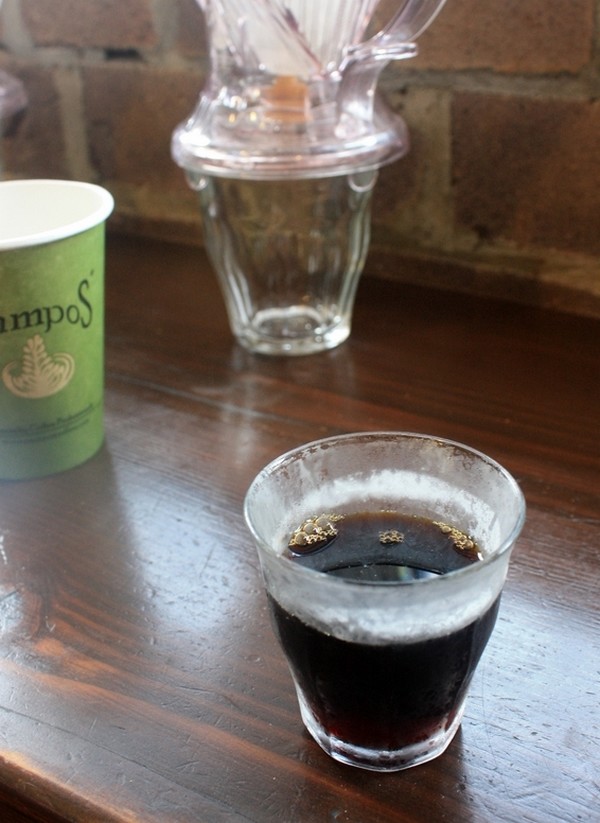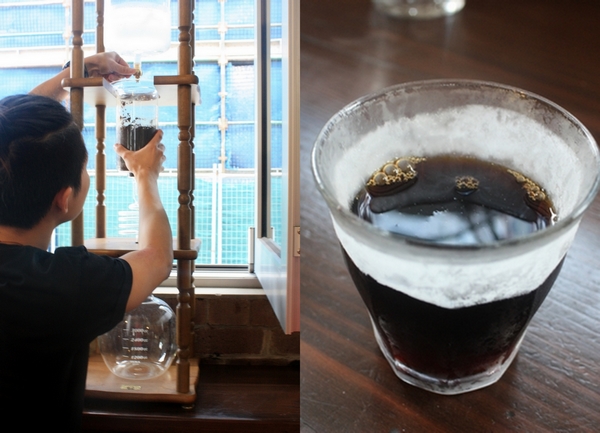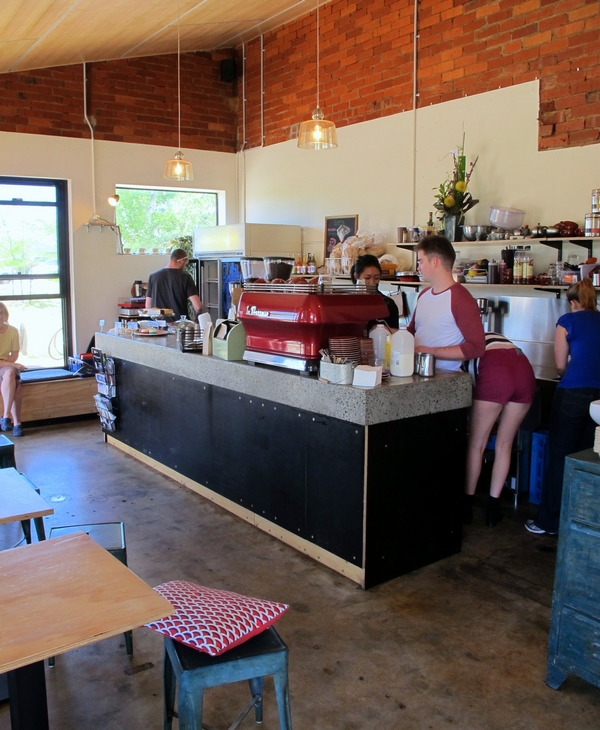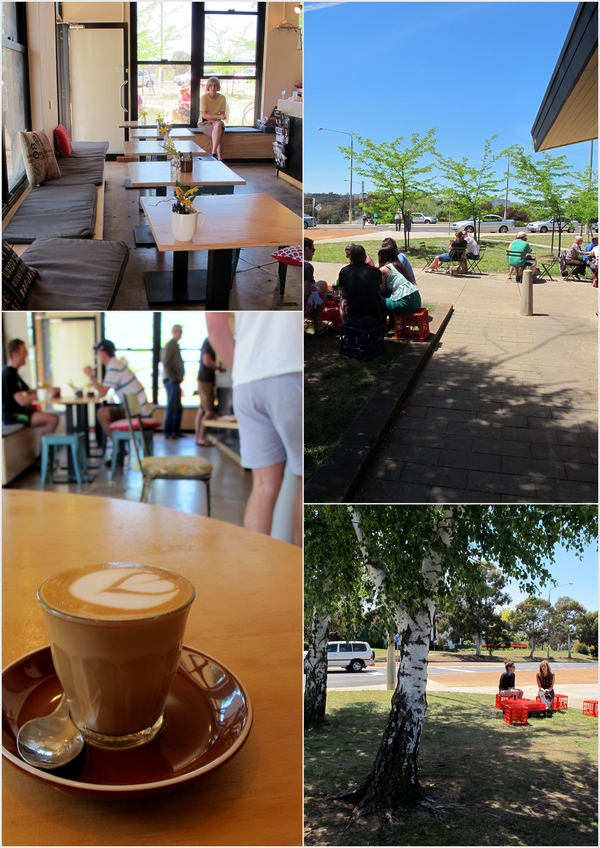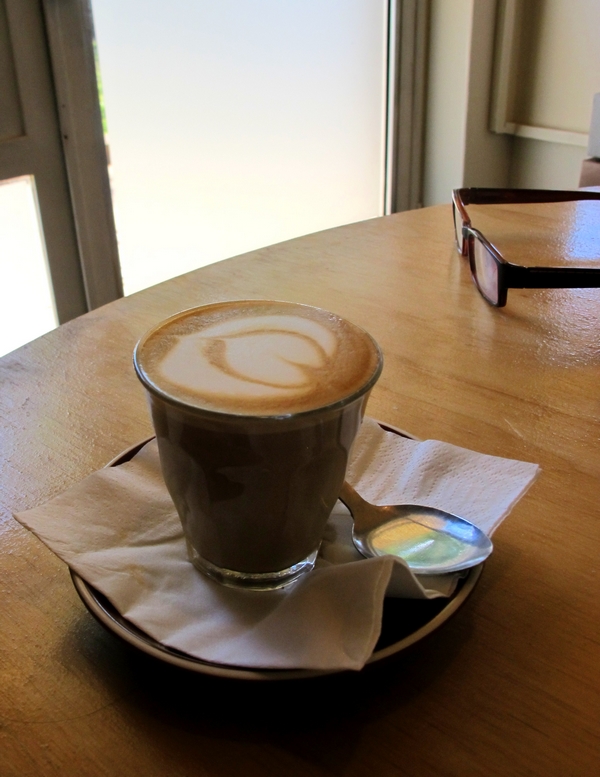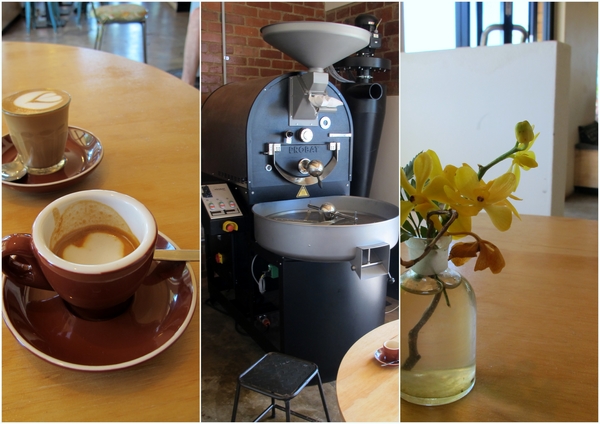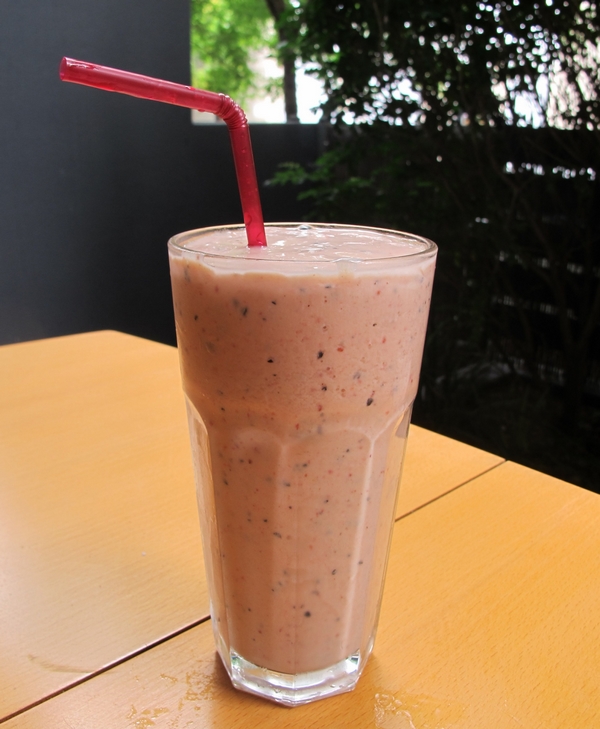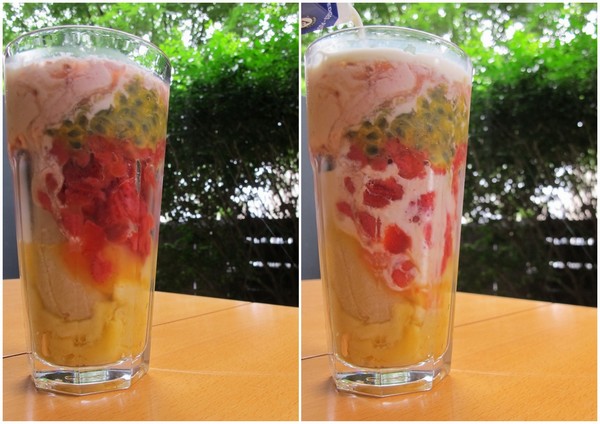Every year I make a pilgrimage to our nation’s capital for The National Multicultural Festival, and every year I am oh so glad I did. This year it ran from the 8th to the 10th of February, and with 50 new stalls added to the lineup, I was curious to see where they’d fit them all…
Our first stop was LSR 23, Lonsdale Street Roasters’ second café. 23 Lonsdale Street houses their roastery, has a reduced menu and an order and pay at the counter policy. They also do something I will never for the life of me understand- make you collect your own have-in coffees. In the time it takes them to yell ‘Fabio’ eleventeen times, they really coulda just brought you the damn coffee. But hey, whatever gets you caffeinated, right?
My assembled companions for our initial Multicultural feast included, from left to right, my bro+chum, fake Sis-in-Law+chum, and partner+chum, as per usual, all stylishly attired and with grimaces (and forks) in hand.
At the Multicultural Festival, it’s always a tough call as to where to start, because you know there’s only so much room in your belly to eat your way around the globe. As it was noonish, we were more than peckish, and hit up the Peruvian stall post haste. Thank god we did. A new addition to the festival, they were serving up mashed potato, stuffed with chicken, boiled eggs and spices (similar to a tamale) deep fried and slathered in salsa. Just incredible- crisp on the outside, fluffy on the inside, with a mild vinegar-and-chilli zing from the salsa. This was my favourite dish of the festival.
We were severly tempted by the yeeros (pictured), considered joining the miles-long queue at the Gloria’s stall for grilled sardinhas (sardines), an, as always, lingered longingly at the Ethiopian stall watching people mop up their stew with pillowy injera. But we passed them all by, meeting up with Canberra coffeehead Barrista Barrister to try something new.
I’d never had Samoan food until this plate. I have to say that although it looks ugly as sin, it is also delicious as sin. Roast pork with plenty of crackling, gravy, samoan chop suey (stir-fried noodles), taro cooked in coconut milk and mashed purple kumara make for a veritable starch-fest. I think we were all glad we shared this between three.
We were intrigued by the pickles on sticks on offer at the German stall, but as we were going easy on the alcohol and the pickles came with beer, sadly, it wasn’t to be.
OK so I have to admit we hit up the famed loukoumades stall twice, but in my defense, it was because the first lot weren’t dark and crispy enough. The second lot, we shared with my mum, so I guess we had parental permission. Yeasty puffs of deep-fried dough squirted with honey and dusted with cinnamon and crushed walnuts, that second plate really hit the spot.
Another favourite of ours is the Bhutanese stall. We grabbed some momo, cheese-laden veggies, meat curry, rice and chilli sauce and scoffed away like there was no tomorrow. Their combo plate is one of the best value dishes on offer, and the people manning the store are lovely to boot.
If you’ve never been to The National Multicultural Festival (or even if you have), I highly recommend it, if only for the food. My year of eating just wouldn’t be complete without it.
Past posts:
The National Multicultural Festival 2012
The National Multicultural Festival 2011
Manual brewing, alternative brewing, whatever you want to call it, it’s time to give it a go. DIY brewing methods such as aeropress, cold brew, pourover, syphon and their more well-known cousins such as French press and stove top coffee form another frontier in the exploration of coffee flavour. What’s more, they’re portable, cheap and easy to learn.
embedded by Embedded Video
YouTube
Still not convinced? Then check out my Q&A with Campos’ resident black coffee fanatic David Ruslie above. He talks black coffee culture in Australia, who’s ahead in the Sydney vs. Melbourne black coffee game and why you should give a damn about hands-on coffee brewing.
Other Black Coffee Revolution Posts:
Aeropress
Cold Drip Coffee
I don’t often go out for breakfast these days, but when I do, I’m a sucker for a fritter and a good poached egg. Recently, I started trying to replicate the flavour and texture of café-style inch-thick, fluffy fritters in my own kitchen, and the results have been pretty amazing. Here are the 4 ‘fritter truths’ I discovered on my journey to corn fritter heaven.
1. Corn fritters aren’t just pancakes with a tin of corn chucked in. Not to say a batch of pancakes or pikelets studded with super sweet, fiberless corn kernels ain’t a delight to the palate, but there’s just so much more they COULD be. So I’ve discarded the pikelet + tinned corn method I’ve used since adolescence (served with a liberal slosh of sweet chilli sauce on the side).
2. Good corn fritters are mostly corn, not batter; the main ingredient is given away in the title. The batter loosely bindes together the corn and other flavourful ingredients. It is light and fluffy and whipped-egg-white heavy (easy on the SR flour), and thus maleable. This means the fritters can be shallow or pan fried (even deep fried should the mood take you), in lumps or thick, flat saucer shapes.
3. Fresh corn is better! I’m told there are places in the world where the corn is so fresh and sweet you can gnaw is raw from the cob, but I don’t live in such a place so I find the corn needs to be sauteed a little pre-fritter. So saw those kernels off the cob, cook ‘em up, let ‘em cool and fold them into your feather-light batter, ready to dollop.
4. There are other things in there besides corn. This was a revelation to me, but of course it makes sense. Garlic. Zucchini. Onions. Chilli. Fresh herbs. Salt and pepper. Spices. Mushrooms. Bacon. There are so many amazing tidbits you can toss into your sauteeing corn. Hell, there are so many ingredients you can use in PLACE of corn, I just really like corn.
Lau’s Ultimate Corn Fritters
serves 4 as a side
I’ve served these fritters many a way – with guac and crispy bacon, with tomato salsa and cumin yogurt, with asparagus and fried eggs. They are the perfect breakfast, brunch or breakfast for dinner.
For the guts of it
olive oil for pan frying (I prefer extra virgin)
1 single clove garlic bulb or 4 normal sized cloves
pinch salt
6-8 rashes bacon or similar, chopped
2 spring onions, chopped
1-2 Tbsp paprika
The kernels from 2 -3 small cobs of corn
½ bunch coriander, leaves finely chopped
For the batter itself
2 eggs, separated
¼ cup milk
½-¾ cup self-raising flour
To Serve
Crispy bacon
Guac
Heat the oil in a medium frying pan, sautee garlic with salt until soft. Add in bacon and cook until beginning to brown. Add spring onions, paprika and corn and cook until corn kernels are soft but still have some bite to them. Remove pan from heat and stir through coriander. Transfer to a large bowl to cool (perhaps in the fridge).
Beat the egg whites to stiff peaks.
Whisk milk and egg yolks together.
Once cooled, add enough flour to the corn mix so that everything is well coated. Fold through the yolk and milk mixture completely, then gently fold in the egg whites.
Dollop 8 dollops on a medium low grill or pan (oiled), flip when golden brown. Cook until cooked through.
Serve as you like. Suggestions include: crispy bacon, non-crispy bacon, guac, salsa, hot sauce, sour cream, poached eggs, fried eggs, hummus, greek yogurt, rocket, basil… the possibilities are endless.
What’s your go-to café breakfast?
So apparently there’s a rumour going around that I’m multiple people, I *think* this might be because if you follow me on instagram I’m all over the place lately. Fear not, chums, I am the one and only Lauren Quinn of Corridor Kitchen, I’m just *ahem* between projects right now, and that gives me ample time to drink coffee all over. In the last two months I’ve had the pleasure of visiting Newcastle and surrounds, Canberra, Bendigo/Castlemaine/Daylesford, the Great Ocean Road, and even good old Melbourne town. And I bet you wanna know my go-to for espresso magic (and no, I don’t mean that bullshit flat white concoction) in Melbourne. ‘Cause good coffee in melbs is so hard to find.
The last couple of times I was in the Melbourne CBD, I made a beeline for Naked Espresso, a cute and well known place on Little Bourke Street. These guys use naked portafilters for their espresso (hence their name) but they also tick the specialty coffee box with their selection of ‘new brew’ techniques such as aeropress and pourover.
This place is a coffee nerd’s paradise; their blackboards list the day’s brews complete with tasting notes, and they sell enough different beans, gadgets and paraphernalia to keep the caffeine-obsessed happy for yonks. The coffee menu changes often, with appearances from the likes of Market Lane, Axil Coffee Roasters and even Naked’s own house blend. On my most recent visit, there were couple of Market lane single O’s on offer for syphon/pourover/aeropress, the house blend for espresso-based coffees and an Axil single origin as their guest coffee.
I sample the market lane Juan Ticona brewed as an Aeropress, it has a lovely chocolatey flavour, mild and delicious. My companion and I also go macch-wild on the house blend – vibrant, vivid, deep and bittersweet, it is an absolute pleasure to savour. Even the aftertaste is sublime.
The menu is a simple affair. There are a a few brekky things- toast and its cousins, baked eggs, porridge and an array of jaffles. They charge 50 cents for swapping/changing ingredients, which I think is fair enough. But this place is really about the coffee. Our house of worship, we are devotees at the caffeine alter. Freshly ground beans are our processional incense. I could sit here forever.
Naked Espresso
390 Little Bourke Street, Melbourne VIC 3000
03 9670 3569
In these posts, we look at black coffee – the contraptions, the methods, the how to’s and the why’s. David Ruslie, Campos’ resident black coffee obsessive, walks us through aeropress, cold drip and pourover. He says there’s a growing interest in black coffee, because, sans milk and sugar, it really allows you to explore the flavour profiles of the coffees themselves.
“Coffee appreciation…it’s catching up to wine appreciation. There’s a lot more tasting notes, say with wine you have 200 tasting notes. Well, with coffee, you have 800 tasting notes, it’s really incredible.” David says. Sure, the man or woman on the street doesn’t need to know all 800 to enjoy their ‘new brew’, but it’s handy, he says, to be able to identify which flavours you prefer. You may think you’re not a black coffee drinker, but maybe you just haven’t found the right bean or the right method.
This week David shows us the simplest and most portable of the black coffee methods, aeropress. There are two main ways David uses the aeropress: the ‘normal’ method and the inverted method. In both cases, he advises that you pre-wet the paper filter with a few drops of water beforehand. To be precise, it’s also worth having a digital scale on hand to weigh your coffee and water, but you can also do it by sight. And the reason the water is boiled at the very beginning is that we’re aiming for water temperature of 92-96 degrees. The video gives you a good idea of what the below instructions actually look like in practice. If you’re interested in buying an aeropress, follow this link.
What you need:
– An aeropress
– an aeropress paper filter
– a kettle
– a mug to drink out of
– ground coffee or coffee beans
– a hand grinder (optional)
– a digital scale (optional)
embedded by Embedded Video
YouTube
The Normal Method
1. Boil your kettle.
2. Dampen the paper filter, place it in the aeropress disc and fit the disc into the larger of the two tubes.
3. Place the aeropress, filter end down on your scales and ‘zero’ them. Grind and/or pour in coffee to the desired weight.
4. Place aeropress over a mug or jug, filter side down.
5. Zero your scales again. Pour in 200g of boiled water. Give it a stir. Steep for 45 seconds.
6. Stir once again and place the ‘plunger’ in the aeropress. Slowly push down until all coffee is in the cup (about 20 seconds).
The Inversion/Upside Down Method
1. Boil your kettle.
2. Push the ‘plunger’ into the aeropress tube and turn upside down so that the tube is on top and the plunger is on the bottom.
3. Place it on your digital scales and ‘zero’ them. Grind and/or pour in coffee to the desired weight into the tube.
4. Zero your scales again. Pour in 200g of boiled water. Do not stir. Dampen the paper filter, place it in the aeropress disc and place on top of the upside down aeropress. Steep for 1 minute and 30 seconds.
5. Stir the coffee to break the crust. Fit the disc into the top of the aeropress. Place a jug or mug upside down on it.
6. Flip the entire aeropress 100 degrees. Slowly push down until all coffee is in the cup or jug (about 20 seconds).
Other Black Coffee Revolution Posts:
Cold Drip Coffee
When it comes to cafes, word of mouth is a very powerful tool. Good word of mouth, before you’ve even opened, allows you to embed you café deep in a suburb, rather than jostling with the rest of the gun baristas for custom on the main drag. Hell, you can even start your own hub of hipness in a post-industrial wasteland.
It also ensures a good mix of truly local customers and those who are willing to really look for their next caffeine hit. A counterintuitive business strategy, but one which has been well established – make your product accessible, but not *too* convenient. Put your small bar down an allyway or behind a suit shop. Plant your flagship Aussie donut store in Penrith. Make your customers hunt around a bit. The rest is history.
So to say that Excelsior Jones is off the beaten path/in an unexpected place/not where you’d think would be a tad misleading. It’s exactly where you’d think- in a suburb crying out for a good café, and I’m betting there’ll be plenty more where this came from.
On Excelsior Jones’ second day of trade the place is packed with the caffeine-iratti, should such a thing exist, plus food bloggers/writers and curious locals. My companion and I order a pair of macchs and some toast. The cups are prewarmed (always a good sign) and I like the diy butter and veg for the toast – you never know what ratio a customer’s gonna want on their sourdough. Jones’ houseblend of five senses coffee goes down a treat with just a splash of milk – a bright flavour settling across the roof of the mouth, with a pleasant kick to follow.
The decor is warm minimalist, the colour scheme painstakingly well thought out. Everything is wood, warm grey, chocolate brown and white; even the cups, salt and pepper shakers and upcycled sugar jars harmonise, without being matchy-matchy. The whole place has a matt patina, loads of light and bare walls. It’s as beautiful as it is uplifting.
My second visit is just over a week later with two friends for an early public holiday Monday brekky. As I wait for my mates I sip away at my macch and browse the menu. This seems to be the family shift, mums, dads and under sevens, and a sprinkling of couples. The place is really loud, kind of a given with high ceilings, wooden floors, huge windows and small children. Once we’re a table of three we can barely hear each other speak. It’s something to keep in mind when timing your visit.
Menu-wise, there’s nothing over $16, but it is worth noting that servings aren’t huge. Between us we order the delectable sourdough pikelets (there are three), a fruit salad of poached and fresh summer fruits, a daub of yogurt and a pinch of oats, and eggs benny. Overall they are quality, simple breakfasts, what you’d expect but done with finesse. Sides aren’t cheap though, and you may need a few if you have a big breakfast appetite. Lucky for me, my usual gripe with brekky is that it leaves me too full, so I’m happy with the portion size.
The menu also includes lunch (which begins at noon) of two sambos, two salads, one cheeseburger and a pasta, as well as fries, and nuggets and chips for the kiddiewinks. The lunches that have been cluttering up my instagram feed appear simple and well presented.
I found the service to be relaxed, friendly and switched on. Staff were attentive, personable, and all-round lovely. There is strong attention to detail in everything these guys do, and I hope this continues. It would be an ideal setting for a bit of coffee gadgetry, and maybe a bit of experimentation menu-wise. Well-executed classics aside, I’d love to see these guys really get creative.
Excelsior Jones
139a Queen Street, Ashfield NSW 2131
02 9799 3240
www.excelsiorjones.com
Tuesday – Friday 7:30am – 4:00pm
Weekends 8:00am – 4:00pm
Closed Mondays
Over the next month, I look at black coffee – the contraptions, the methods, the how to’s and the why’s. David Ruslie, Campos’ resident black coffee obsessive, walks us through aeropress, cold drip and pourover and explains why he’s so passionate about this back-to-basics approach.
“Australian coffee culture is actually milk coffee culture, and I’m trying to change it,” David tells me. Single-handedly trying to convert us from flat-whites-with-one to siphon/cold drip/aeropress? Not so much, Dave says, but he’s excited to share the precision and hands-on nature of black coffee brewing with me. He kindly offered to walk me through these ‘third wave’ or ‘fourth wave’ (whatever it is we’re up to now) methods. We’re going to start with the chemistry lab setup that is cold drip.
David explains that there are two basic methods of coffee making- immersion and percolation, and cold drip is full percolation. This method involves steeping fresh, coarse coffee grounds at room temperature over time, usually around 12 hours. This results in an extremely caffeinated, low acidity, sweet-tasting cold coffee, and a brew that non-espresso drinkers often warm to. ‘It doesn’t actually taste like coffee.’ says David, which is a good way of explaining the flavour- bright, mild and tea-like.
For the cold drip, David used 1500mls of water for 250g of ground coffee, with a resulting yield of 1200ml of cold drip brew. The ideal brewing time is 12-15 hours, as there is no heat to aid extraction. David favours 8-9 drips per 10 seconds
As complex as this chemistry lab setup may look, you don’t necessarily need it to cold brew your own coffee at home. Similar results can be achieved by steeping coffee in a jar or overnight, and then pouring the resulting liquid through a coffee filter and chilling for future use. You can also do this in a French press, as you would for hot coffee but again, overnight.
embedded by Embedded Video
YouTube
The video above demonstrates how cold drip is made. For more info on how to brew you own cold coffee at home, click here.
Are you a cold coffee fan? What’s your fave way to enjoy it?
Other Black Coffee Revolution Posts:
Aeropress
I fear that Canberra, much like Sydney, is in serious danger of burning through its allocation of milk crates. Not because of the popularity of milk, but rather because they serve as seating for the crop of on-trend cafés popping up in old (but not in a retro way) shopfronts all over town. I love/hate this trend for numerous reasons. Milk crates are fine to sit on (with cushioning); they serve as a signal to customers, ‘take this coffee joint seriously’. But while they look incidental, in an ‘oh we were just SO BUSY making GROUNDBREAKING espresso we forgot to buy chairs!’ kind of a way, they are entirely deliberate. This is why there’s a countrywide shortage. I assume.
Red Brick espresso is no exception. Milk crates are scattered plentifully out the front of this Curtin café, and they’ve taken it to another level with the accompanying tables, made of bread crates. I hope there’s not a delivery guy out Fyshwick way somewhere going broke for lack of crates.
We stand at the counter for a while waiting to order, staff seem a little harried so we wait as they hand out the takeaways. We order coffee and seat ourselves in the unmistakeably Canberran, light-filled and cleverly renovated space, which, as we’re in the southside of Canberra, could’ve been anything in a past life- a house, a pharmacy, or a sex shop – all roads lead to rectangular brick structures. The guys behind the espresso machine look like they know what’s what – they roast their own coffee here, and are well and truly the third wave.
The coffee arrives. One of our piccolos is spilled a bit and the young waitress runs and grabs us a serviette. How about a fresh saucer? The spillage is hardly her fault though, the piccolos are almost flat white flat. My macch is cool, as are all the coffees, and nothing about the flavour grabs me. It’s fine, I can’t fault the method on my macch (other than the temperature, and I’m not a hot coffee drinker), so maybe this blend just isn’t for me.
The Red Brick Espresso Hombres were recently quoted in Cafe Culture as saying “We looked at what’s happening elsewhere and said, ‘why can’t we do it here?’ Red Brick ticks all the boxes and, if I lived in this neck of the woods, I’d be here daily. But no matter how many milk crates you give someone to sit on or whether you roast your own beans, it all goes to crap when a teenage girl spills your latte. And for the record, I’ve been back since, the coffee was still lukewarm, and I’ve heard the same from others. But I guess if I was from New York and came to visit my mates in Surry Hills, I’d feel like the café culture here is just a watered down version of what’s going on back home. For all I know the Williamsberg peeps are sitting on upturned shopping trolleys these days. I pray that trend doesn’t make it here.
Red Brick Espresso
4/35 Curtin Place, Curtin ACT 2605
02 6285 1668
http://www.redbrickespresso.com.au/
Monday-Friday 7:30am – 4:30pm
Saturday 7:30am – 4:00pm
Sundays 7:00am – 2:00pm
Like many of you who are in the midst of summer right now, I haven’t been cooking much of late. However, I have been getting back into smoothies come breakky time, so I thought I’d share some tips on how to take a glass of blended fruit and milk to something close to perfection.
1. Make your smoothie mostly fruit
There are two reasons for this. Firstly, as someone who isn’t a big fan of fruit unless somebody else has cut it up for me and garnished it with lashings of whipped cream, this is a sure fire way to get a big serve of multiple fruits in one go, without losing out on fibre as you do when juicing. Secondly, because milk isn’t the main ingredient, those who are lactose sensitive/intolerant or like to avoid dairy won’t be missing out – you can sub in juice, soy milk, soy yogurt, almond or rice milk, even coconut milk, as long as you chill it first.
2. Fill the glass, not the beaker/blender/food processor
In the past, I was forever getting the quantities (or the ratio of ingredients) wrong when it came to smoothies. I’d whack a bunch of ingredients in the beaker for my stick blender, blend away like mad, topple the lot into my glass and find I’d made too much/not enough/it was too watery. These days, I just fill as many glasses with fruit as needed, top with yogurt or ice cream, and fill to the brim with milk. Pour the glass/es into the blender and viola! The perfect size.
3. Freeze your fruit
This will give you a thickshake or melted ice cream consistency, making the smoothie feel treat-like rather than medicinal. It also means you can save your fruit before it goes strange by chopping, portioning and freezing it ready for smoothies. Your smoothie will be cold, delicious, and so thick you could eat it with a spoon. In fact, if you pop it in the freezer for half an hour you could even serve it as dessert.
4. Use 4 fruits or less
In the smoothie pictured, I have fresh mango, half a frozen banana, frozen strawberry pieces and the pulp of two passionfruit. I’ve noticed keeping things to 4 fruits or less gives a cleaner taste. Also, one of the strongest flavours in the smoothie is banana, which makes sense because bananas are one of the sweetest fruits you can buy, so I never put in more than half a banana unless I want that to be the only flavour. The worst smoothies I’ve had don’t taste like anything in particular because there are so many kinds of fruit in there that no one flavour stands out. So whatever your fave fruit is, go heavy on that.
5. Use a straw
Ok, so this is just a personal preference of mine, but doesn’t life just feel that much more luxurious when you’re sipping your drink through a straw? I’m not saying you’ll feel like you’re on a northern Brazillian beach or anything, but a straw can’t hurt. Hell, why not chuck in a cocktail umbrella for good measure.
What’s your fave smoothie recipe?
This week, I will donate the money I would’ve wasted on eating my way out of boredom to Foodbank. This week, my household will donate $449. Add $70 to that and you get the amount on money we spent on food the week before. And not only that, that is $100 MORE than we donated last year.
I just want to say a massive thankyou to everyone who blogged, tweeted, commented and participated in the $35 Challenge this year. The Challenge is all about raising money, raising awareness, and raising hope that perhaps, some day soon, there won’t be so many Australians for whom the next meal will be from a charity, serverely nutrionally deficient or no meal at all.
If you completed the Challenge and/or would like to donate, please fill out the survey below. To purchase your copy of The Potluck Club charity e-cookbook, with all proceeds going to Foodbank, please click here.
After completing the survey, please click here.
About me
 Sharing easy recipes, hunting down the best coffee. Honest accounts, nothing too serious. Read more...
Sharing easy recipes, hunting down the best coffee. Honest accounts, nothing too serious. Read more...Recent Posts
- Aerpress means no more shit #travelcoffee and #workcoffee
- Why I write and four ace bloggers who do it better
- The five best things I ate in London
- Shoreditch is awesome, airports are not
- I quit sugar? Do I bollocks.
- Cubao Street Food, Alexandria
- The Reformatory Caffeine Lab, Surry Hills
- Brewtown Newtown
- Stay caffeinated over Christmas
- Gumption by Coffee Alchemy, Sydney CBD
Popular posts this month…
 The quest for Mex part 2 – Feisty Chicken Burritos posted on December 21, 2010
The quest for Mex part 2 – Feisty Chicken Burritos posted on December 21, 2010  Sparkling Long Black posted on May 10, 2011
Sparkling Long Black posted on May 10, 2011 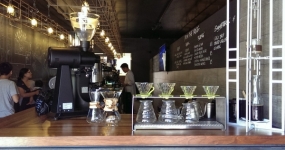 The Reformatory Caffeine Lab, Surry Hills posted on February 14, 2014
The Reformatory Caffeine Lab, Surry Hills posted on February 14, 2014  2 Chippo Coffee Gems posted on December 1, 2012
2 Chippo Coffee Gems posted on December 1, 2012 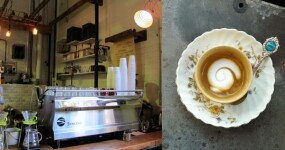 Cubao Street Food, Alexandria posted on May 26, 2014
Cubao Street Food, Alexandria posted on May 26, 2014  Café review – Flint and Steel (Coffee Alchemy), Marrickville posted on March 1, 2011
Café review – Flint and Steel (Coffee Alchemy), Marrickville posted on March 1, 2011  Cheat’s Dulce de Leche posted on January 7, 2011
Cheat’s Dulce de Leche posted on January 7, 2011  Review – Philips Saeco Intelia posted on January 10, 2012
Review – Philips Saeco Intelia posted on January 10, 2012
Disclaimer:
All opinions in this blog are mine, an everyday, real-life person. I do not accept payment for reviews and nor do I write sponsored posts. I do not endorse the content of the comments herein.










